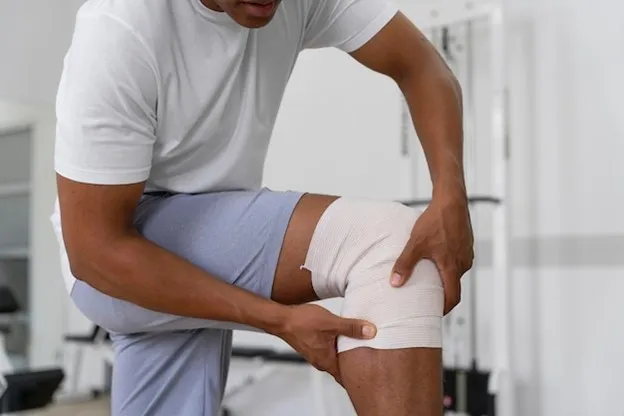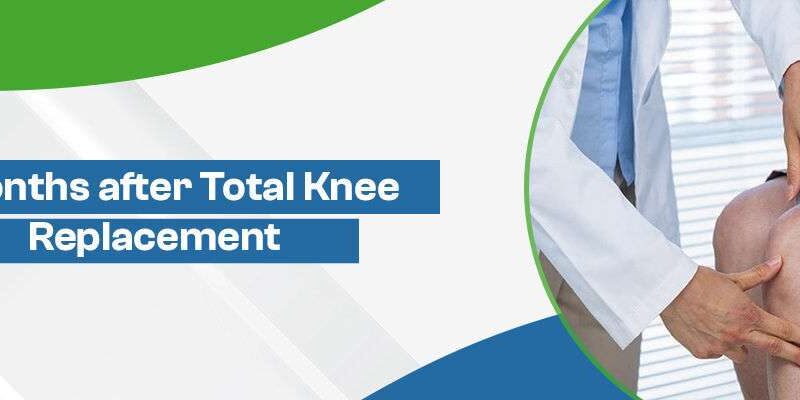Discover the journey of recovery and the importance of post-operative care after total knee replacement from Dr. Sandeep Singh, often called the best orthopedic doctor in Bhubaneswar.
A total knee replacement (TKR) is typically recommended when non-surgical treatments no longer relieve knee pain and mobility limitations caused by osteoarthritis, rheumatoid arthritis, or knee injuries. You may consider TKR if you experience severe knee pain, stiffness, swelling, difficulty walking or climbing stairs, and a significant impact on your daily activities and quality of life. Consulting with an experienced orthopedist in India can provide personalized treatment options and guidance for managing knee-related issues effectively.
Discover the journey of recovery and the importance of post-operative care after total knee replacement from Dr. Sandeep Singh, often called the best orthopedic doctor in Bhubaneswar.

Resuming normal activities 4 months after total knee Replacement
Most individuals can gradually resume normal activities 4 months after total knee replacement. Patients witness a significant decrease in knee pain with dedicated effort following the surgery. The bone-on-bone pain is no longer present; overall, they feel great. Soreness in the muscles, ligaments, and tendons surrounding the knee is common, as is minor swelling and sensations of heat.
Patients can expect increased leg strength and stability at 4 months after total knee replacement. Patients of orthopedic specialist Dr. Sandeep Singh have successfully participated in activities like golf, beach walks, and swimming.
“My patients have said such activities were unthinkable before their surgery,” says Dr. Singh. “Hiking, in particular, was a significant accomplishment, with no unusual knee pain experienced despite the expected body soreness.”
“However, it is important to follow the post-op guidelines and continue with rehabilitation exercises,” advises Dr. Singh. “This will ensure proper healing and regaining of strength, and you can gradually build your activity level without putting excessive strain on your knee.”
Dr. Singh is a renowned knee replacement doctor in Bhubaneswar with expertise in the latest surgical techniques, including robotic knee replacement surgery.
Now, let’s discuss the
Post-operative care to follow

- Attend physical therapy sessions to regain strength, improve range of motion, and promote proper healing.
- Take pain medications as directed and adhere to any other medicines your surgeon prescribes, such as blood thinners, to prevent complications.
- Keep the incision clean and dry, and follow instructions provided by your surgeon for dressing changes and wound care.
- Initially, use assistive devices like crutches or walkers and transition to walking aids as advised. Gradually increase activity level as guided.
- Perform recommended exercises to strengthen the muscles around your knee, improve stability, and promote overall recovery.
- Manage pain with ice packs, elevation, and over-the-counter pain relievers, as your healthcare team advises.
- Make necessary modifications to your daily routine, such as using proper body mechanics, avoiding excessive weight-bearing activities, and maintaining a healthy weight.
Attend all scheduled follow-up appointments with your surgeon to monitor your progress and address any concerns or complications.
Always consult a highly-skilled orthopedic surgeon like Dr. Sandeep Singh for personalized post-operative care instructions based on your specific condition and surgical approach.
Take a look at the
Best exercises 4 months after total knee replacement
Common exercises during this stage often include:
Quadriceps Strengthening:
Straight leg raises, quad sets, and squats with proper form can help strengthen the quadriceps muscles.
Hamstring Strengthening:
Hamstring curls using resistance bands or a leg curl machine can target the hamstring muscles.
Range of Motion Exercises:
Continuous focus on improving and maintaining knee range of motion through activities like heel slides, wall slides, and gentle stretches.
Stationary Biking:
Using a stationary bike with appropriate seat height and resistance can help improve knee mobility and strength.

Walking:
Gradually increasing walking distance and pace can enhance overall mobility and endurance.
“A combination of physical therapy exercises, stationary and regular cycling, and the use of a massaging product before and after workouts can help promote your overall healing process,” says orthopedic expert Dr. Sandeep Singh. “At the same time, you must avoid certain activities that can impact the healing process.”
Let’s see the
Things to avoid after knee replacement
- High-impact activities such as running, jumping, or participating in contact sports
- Excessive twisting or pivoting movements that can strain the replaced knee joint
- Deep knee bends or squatting beyond the recommended range of motion
- Activities that put excessive stress on the knee joint, such as heavy lifting or carrying heavy loads
- Excessive weight gain as it can place additional strain on the knee joint
- Prolonged periods of standing or walking on hard surfaces without taking breaks
- Neglecting to follow the prescribed rehabilitation exercises and physical therapy program
- Ignoring signs of discomfort, pain, or swelling and not seeking medical attention when necessary
- Abruptly stopping any pain medication or other prescribed medications without consulting the healthcare team
- Smoking as it can impede the healing process and increase the risk of complications
- Ignoring post-operative care instructions and guidelines provided by the healthcare team
Conclusion
Consider incorporating activities like swimming, cycling, or dancing into your routine to make your recovery enjoyable. Managing swelling through elevation and ice, and considering regular massages, can provide additional relief. By strengthening the muscles, tendons, and ligaments surrounding the knee, you reduce pressure on the joint and pave the way for a successful and fulfilling recovery.
“The key lies in your dedication and perseverance as you work towards regaining your mobility and embracing a pain-free life once again,” says Dr. Sandeep Singh, the go-to knee replacement doctor in Bhubaneswar.
If you or a loved one has concerns about pain or discomfort 4 months post total knee replacement, please visit Dr. Sandeep Singh for reliable treatment options.
Dr. Singh has over 11 years of experience providing solutions to people with
fractures, sports injuries, and other orthopedic conditions.
FAQs
When Will I Be Able To Walk Normally After Knee Replacement Surgery?
The time it takes to walk normally after knee replacement surgery can vary, but most people can walk without assistance within 6 to 12 weeks.
What Is The Maximum Range Of Motion After Knee Replacement?
The maximum range of motion after knee replacement surgery typically ranges from 110 to 120 degrees. However, this can vary depending on individual factors and surgical techniques.
Is It Normal To Have Swelling In The Knee Area Four Months After Surgery?
You can expect some swelling in the knee area four months after surgery as the healing process continues. However, it’s always best to consult with your doctor to ensure there are no complications.
Is Yoga Good After Total Knee Replacement?
Yoga can be beneficial after total knee replacement surgery, as it helps improve flexibility, strength, and overall joint health. However, it’s important to start with gentle, modified poses and consult a physical therapist or healthcare professional to ensure proper technique and avoid strain.
Is It Good To Massage The Knee After Knee Replacement?
Gentle massaging around the knee area after knee replacement surgery can promote blood flow, reduce swelling, and ease muscle tension. Please consult your doctor or a physical therapist for specific guidance on the appropriate technique and timing.

